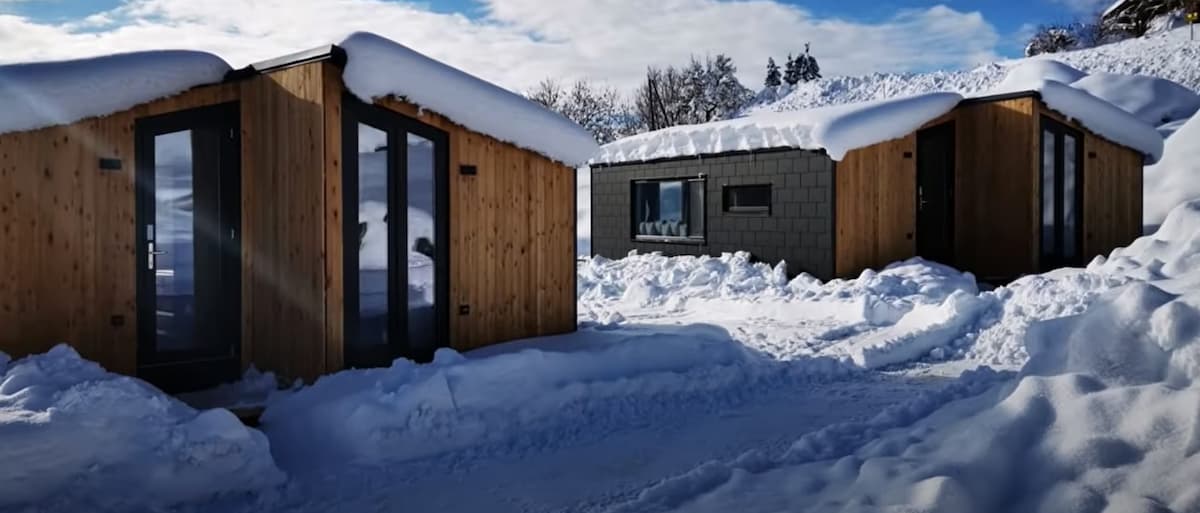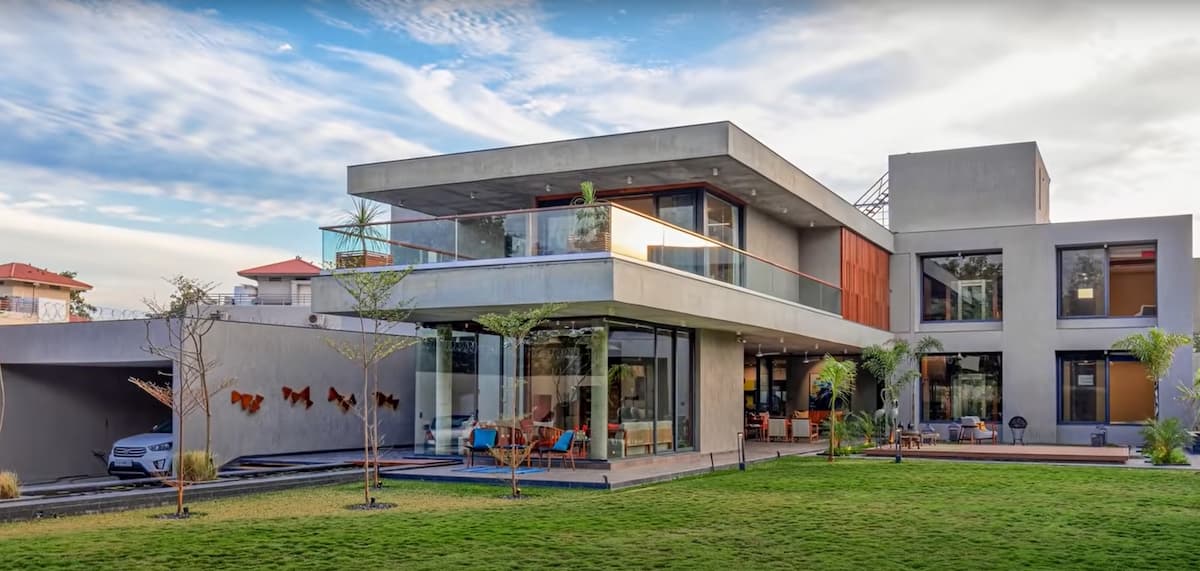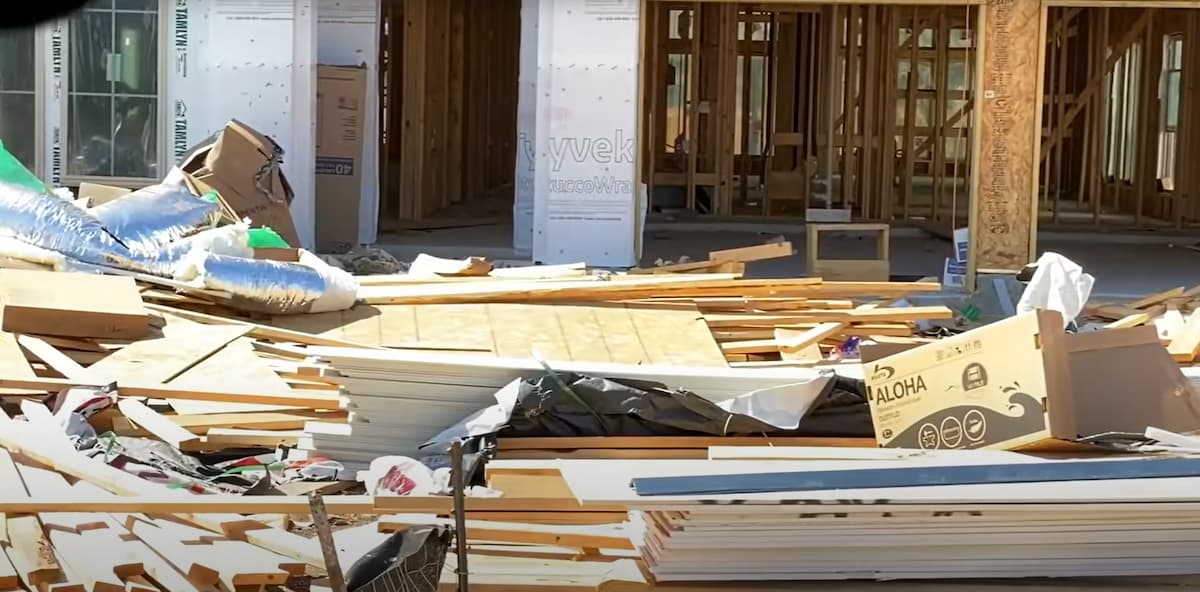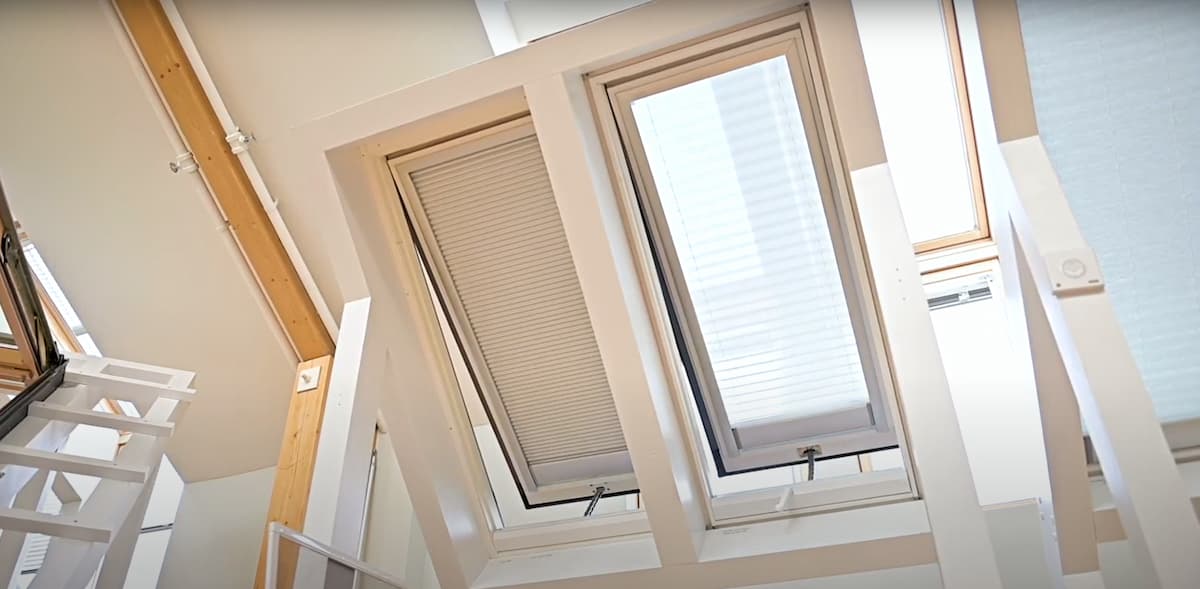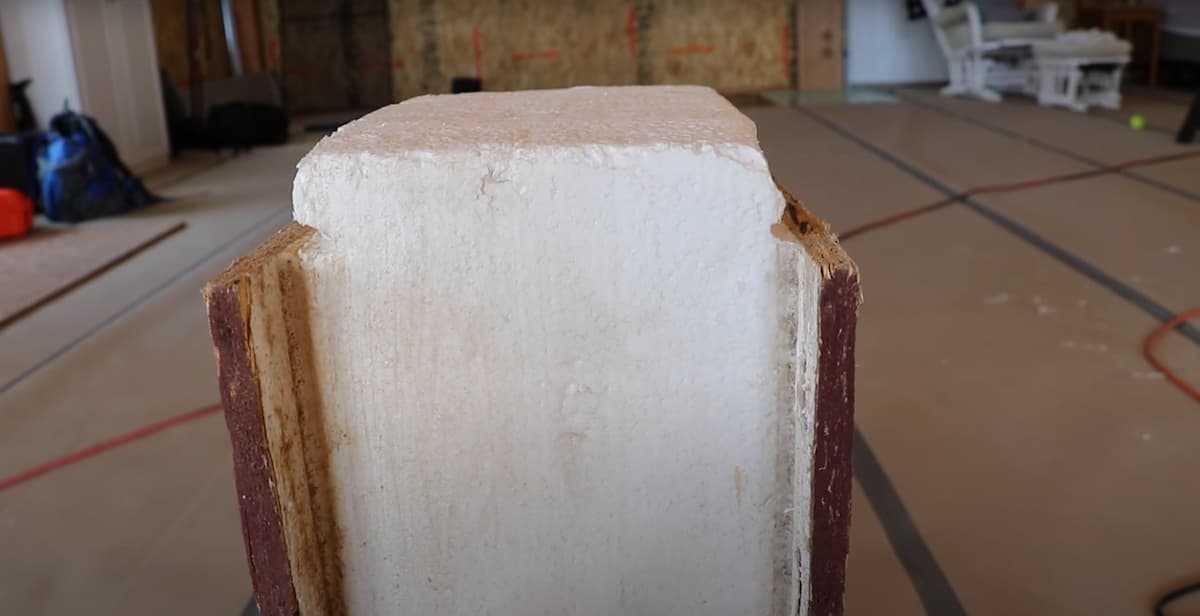
A comparison of the cost per square meter for SIP panels and conventional construction.
SIPs are more expensive upfront, but they provide an excellent return on investment over time. It is important to note that not all SIP panels are created equal. Panel quality can vary greatly, with some being made from lower-quality materials that cannot withstand the test of time. This article may help you find a quality supplier that offers both affordability and durability so you don’t have to sacrifice one for the other.
SIP panels are a great option for builders that want to provide a quality product, but keep costs down at the same time. Since they can cut labour costs in half and speed up construction by 50 per cent, they’re an excellent choice for developing areas as well as those that could use a little extra help to stay competitive with other communities. The initial cost is high so when you purchase SIP panels, it’s important to be aware of what you’re getting into before you sign on the dotted line.
What are Structural Insulated Panels?
SIPs are made by combining several materials, including rigid foam insulation, plywood or OSB panels and a variety of adhesives. They are much stronger than traditional wood-framed walls and can withstand earthquakes remarkably well. The panels are typically much lighter as well which allows them to be put up very quickly.
SIP panels are also more versatile than conventional construction materials so they can be installed in buildings of virtually any size or shape. They can be used to construct walls between rooms, around corners and even through obstructions like pillars because the panels are pre-fitted with openings for electrical wiring and plumbing. This means that builders don’t have to spend time creating these openings before installing the panel, which saves them even more money on labour costs.
What are Structural Insulated Panels Made of?
Each panel contains two outer engineered timber facings and a polystyrene foam interior core. The panel is a laminated composite of these materials produced in Western Australia. The outside facings are Orientated Strand boards (OSB/3), which are manufactured using wood from the annual thinning of managed forests. E0-rated OSB is used in the manufacturing of the OSB manufacturers use, which is manufactured using a 100 per cent formaldehyde-free bonding process.
The polystyrene central insulation core is safe, non-toxic and manufactured in low-energy steam When integrated, these fibre-reinforced products create a composite component that is exceptionally strong, lightweight, air-tight, highly insulated and energy-efficient. They are used as structural components in building projects.
Each type of material plays an important role in making a sips building strong enough to last years without problems. The foam insulation provides resistance to moisture while the exterior covering is responsible for preventing humidity from reaching the inside of the building. The OSB carrier board allows the panels to be easily transported to construction sites, while also providing extra strength and durability over time. Most SIPs are made with several other types of materials as well, including various chemicals that make them fire retardant and mould resistant.
Structural Insulated Panels Cost
Due to the durable nature of these panels, usually sips cost a lot per metre squared. Since it’s an investment, you’ll want to get your money’s worth out of them by using them in a location that may get plenty of use over time. For example, buildings that are four or five storeys high require SIPs on all sides for maximum insulation and protection from the elements. While two-storey homes might only need them on the side with the highest exposure to wind or rain for added durability.
The material price does not account for the labour savings that come with SIPs construction. According to research, using SIPs may save as much as 55% over conventional buildings when it comes to frame labour. When calculating overall costs, this kind of a big difference in sips cost could not be neglected.
Costs are reduced still more because fewer people are required to build it. Some producers, such as masonry firms, even pre-cut and finish rough openings, reducing labour expenses even further. Installing a window or door into a completely completed hardhearted opening is far less time consuming than stick framing or cutting rough SIPs onsite.
Sips Panels Cost per m2 Australia
Conventional building materials such as timber and brick are less than half the price per square metre when compared to SIPs. Where a conventional house construction might cost $200-300 per square metre to build, a home constructed with structural insulated panels might start at around $600-$800/sqm. This is because you may typically need 100mm of insulation in your wall cavity for an effective level of insulation if using SIPs. On average, the material itself may cost anywhere between $15 and $20 per square metre. These wall panels are usually custom-made for each project, which increases costs.
When looking at the structural insulated panels’ cost, there are two main factors to consider. The first is the cost of materials, then there’s the cost of labour, including production time and installation costs. These vary depending on the company doing the work. This may quickly become almost double what it would typically cost to build a conventional frame house of comparable size. This makes it quite an expensive option compared to more common construction choices like brick or timber homes.

Benefits of Using Structural Insulated Panels/Sips
Builders are the main beneficiaries of the cost savings associated with structural insulated panels. Homebuyers, on the other hand, may likely be unaware of how much money they are actually saving when purchasing a homemade with this type of material. Building with SIPs also saves time in construction in addition to reducing costs by requiring fewer workers and reducing labour expenses typically required for brick or timber homes.
Not only do these benefits save money in the long run for homeowners, but they also cut down on carbon emissions because less energy is used in manufacturing SIPs than producing traditional building materials. The benefits of using structural insulated panels are many when compared with conventional ways of building walls out of brick or timber.
Not only do the panels offer increased thermal efficiency through better insulating capabilities, but they also require less labour during assembly due to there being no need for mortar between bricks or the additional challenge of cutting lumber. Sips are environmentally friendly because they don’t emit any harmful gases when manufactured or while being constructed. Also, the panels themselves do not produce waste during installation aside from some protective debris on top of them. Product costs are lower due to decreased construction times and less labour required for assembly.
Insulated Wall Panels for Internal Walls
Structural insulated panels in a sips building can help reduce heating and cooling costs within your house significantly over conventional brick or timber construction. The panels provide excellent insulation, which helps maintain the temperature of your structure in any climate. Even when air conditioning is required in addition to heating during colder months, SIPs help keep cooling costs down since they do not transfer heat easily like brick and timber walls.
The cost savings alone make structural insulated panels worth considering for most homeowners or investors building new buildings. Getting enough insulation into the wall cavity is imperative because extra insulation does little good if there isn’t proper airflow for it to work properly. With its proven durability and energy-efficient design, this product is quickly becoming the most popular style of material used to construct homes nowadays. Beware of companies using SIPs for marketing purposes
SIPs are a great option, but be careful when making your product selections. It is not uncommon for producers to try to “hype” their products by comparing them to other web materials that they are not related to or even remotely equivalent in terms of strength or durability under load. Also, you could ensure that the company offering this style for sale has actually built homes with it before and knows what can go wrong if you try to do something outside of the norm.
Are Structural Insulated Panels Any Good?
There are websites that have dedicated their existence to find out which company uses the best structural insulated panels. This is what makes it so hard to choose the right panel for your building. There are also many different ways of putting together SIPs, which can cause big problems if not done correctly. However, once you find a good supplier and get past these initial details, you may have made an excellent choice that could last you for decades to come.
The general consensus among people that have put into use this kind of material is very positive. Furthermore, compared to traditional brick homes, they say the difference in cost is well worth it due to improved insulation levels and other benefits associated with using Sips rather than bricks or timber walls. Structural insulated panels are quite popular in the United States and Canada due to their affordability and ease of installation. Now, these same benefits are starting to catch on in Australia as well. The thermal performance and durability of this material make it a great choice for both new and old homes that want to have energy efficiency.
How Long Might Sip Panels Last?
Some people claim that this kind of material may be able to last for over a century, but the truth is nobody has been around long enough to confirm whether or not that statement is true. The panels have been tested by independent sources and found to be superior insulation compared to traditional wall materials such as bricks, concrete blocks and timber. In fact, SIPs may often outperform these building materials by several degrees Celsius.
How to Reduce Construction Costs With SIPS Panels?
Some homeowners are concerned that buying SIPs may cost more than the traditional building materials for homes or outbuildings. However, most of them agree that once they account for the improved insulation value and lower heating bills in the winter, there is no reason to not use this material when possible.
Purchase pre-fabricated SIPs panels directly from a distributor if you are not experienced with construction techniques. This may help you save money without the need to hire an expert. If you are not sure if your proposed building location is suitable, have a professional conduct test at various points in the construction process.
Do SIP Roof Panels Reduce Air Leakage?
Yes. The panels provide additional support to the roofing structure and prevent air leakage, which can lead to costly damage over time. If you are planning to use a different kind of material for your roof, or if you have any other questions about SIPs construction, consult with a reliable building contractor.
Structural insulated panels are a great option for homeowners that want to add more value to their properties. In fact, SIPs can provide a lifetime of peace of mind with just one small investment. In the current construction business climate, not many construction options have been proven as effective and durable as structural insulated panel building systems. If you found structural insulated panels interesting to use and don’t mind the sips cost for external and internal walls get yourself an upgrade than a traditional timber frame.
Could Sips Roof Panels Be Considered Green?
While there is no question that structural insulated panels offer at least some energy savings compared with traditional building materials like brick and timber, the same benefits can be gained by applying insulation to the outside of a brick or timber wall. This is also technically possible with SIPs, but this would be completely unattractive and impractical and may result in a house that has little benefit over traditional construction methods.
Insulation on the exterior of your building can lead to an increase in moisture likely leading to mould growth within the walls if there is any water ingress into your home. With structural insulated panels, you reduce this risk as it’s located inside your home instead of outside, which leaves no room for error during installation. This makes them a great option for those looking to create more sustainable homes without losing too much time or cash in terms of construction costs.


